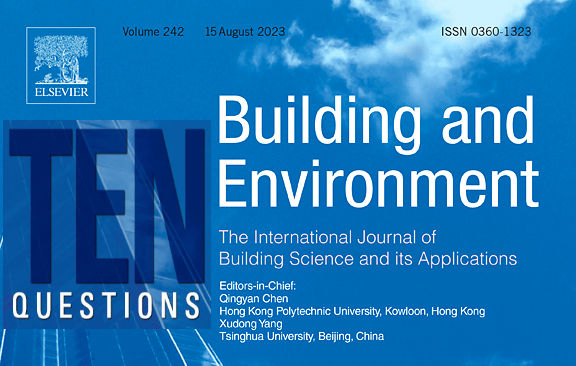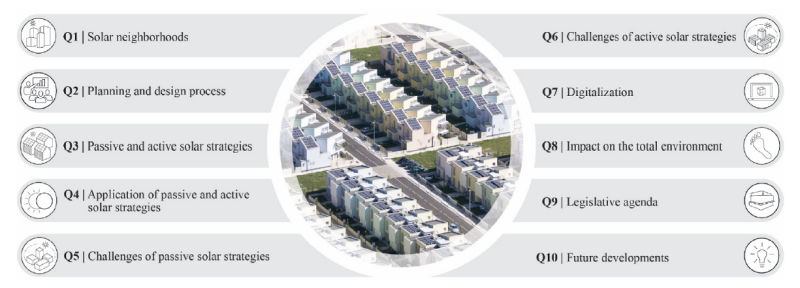Posted: November 24, 2023

10 key questions, 12 authors and two years of drafting time led to a comprehensive paper on planning and design strategies for solar neighborhoods, which has just been published by the journal Building and Environment. The initiative originated from Associate Professor Maria Wall, who heads IEA SHC Task 63 on Solar Neighborhood Planning and is based in Sweden at the Lund University’s Building & Environmental Technology Department. “We worked hard to choose questions that have relevance not only for researchers but also for policy makers, practitioners and urban planners,” said Wall. The idea for publishing the series of “Ten Questions” papers was initiated in 2016 by the editors of Building and Environment. You can download the paper here: https://doi.org/10.1016/j.buildenv.2023.110946.

Visualization of the ten areas concerning solar neighborhood planning and design strategies treated in the Ten Questions paper. Source: Paper, Building and Environment 246 (2023) 110946
What is a solar neighborhood? What are the passive and active solar strategies in solar neighborhoods? What are the challenges when implementing passive solar strategies into solar neighborhoods? What legislative agenda is needed to support solar neighborhoods? These are some of the questions raised and comprehensively answered in the paper.
The questions can best be answered by an interdisciplinary team. This is exactly where the strength of the IEA SHC Programme lies. For 10 years, Wall has led an international, multi-disciplinary research group on solar urban planning within IEA SHC. From May 2013 to April 2017 the activities ran under IEA SHC Task 51 on Solar Energy in Urban Planning. Since September 2019 they have been part of Task 63 Solar Neighborhood Planning.
The question How are passive and active solar strategies applied in solar neighborhoods? is answered in the paper with practical examples. Basically, the experts in Task 51 and 63 have described planning and design strategies using detailed case studies. In the paper, five projects are illustrated: One Central Park in Sydney (Australia), West5 in London (Canada), Norwegian University of Science and Technology in Trondheim (Norway), Violino district in Brescia (Italy) and Science and Technology Park Adlershof in Berlin (Germany).
You can find factsheets from more than 30 case studies on a world map at this link https://task51.iea-shc.org/case-studies, collected within Task 51. The experts of Task 63 will add around 20 new case studies to the map next year.
Unique overarching article
In the decade since 2013 there have only been a few occasions when a larger, international group of IEA SHC solar urban planning experts have teamed up to write an interdisciplinary paper. The first was in 2019 with the title A cross-country perspective on solar energy in urban planning: Lessons learned from international case studies, which is also available in open access: https://doi.org/10.1016/j.rser.2019.03.041.
However, the Ten Questions paper is a special case in its overarching content, according to Wall. “We have summarized experiences and findings from more than ten years of international research in this paper and quoted more than 200 references”, she said. “The writing process was really a great experience, since we learned a lot from each other and got different perspectives on our work”. Gabriele Lobaccaro and Mattia Manni from NTNU had the role of coordinating the work with this paper and “did the job very well”, Wall confirmed.
All 10 Questions papers had a two-step review process. In the first step in 2022 the author team suggested the ten questions and listed ten very short answers. They then received feedback from the reviewers and approval to start writing the paper in 2022. The second peer review took place in 2023. Finally the paper was accepted for publication in Building and Environment in October 2023.
Further information: